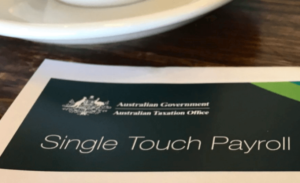
Superannuation is the savings accumulated during your working life to support you in your retirement. Your super balance is preserved, meaning that you are unable to access your super legally, until you meet a what is known as a ‘condition of release’.
The most common conditions of release are:
- Reaching your preservation age and retiring.
Your preservation age is the age to which your super benefits are preserved, and is dependent upon your year of birth. If you were born before 1 July 1960 then your preservation age is 55. Recent legislative changes have seen the preservation age increase incrementally to where, if you were born after 1 July 1964, then you super is preserved until you reach 60.
- Reaching your preservation age and commencing a transition to retirement income stream.
A transition to retirement income stream, or TRIS, is a pension paid from your super balance with certain limits such as a maximum annual payment amount.
- Being 60 and over and ceasing an employment arrangement.
Ceasing an employment arrangement can include changing jobs or retiring from one job in the situation where you may have two different employers.
- Being 65 or over.
You do not have to retire once you reach 65 to meet this condition of release.
- Death.
Other conditions of release exist, though they have strict eligibility criteria. These include:
- Compassionate grounds.
Super funds can be released for a specific situation such as payment of medical treatment for yourself or a dependent, payment of a loan to prevent losing your house or to cover funeral expenses of a dependent.
- Severe financial hardship.
Eligibility for accessing super via this method includes being the recipient of government income support payments continuously for 26 weeks, and an inability to meet immediate and reasonable family living expenses.
- Upon diagnosis of a terminal medical condition.
Super may be accessed early if you have an illness that will likely result in your death within 24 months. This diagnosis needs to have been certified by two medical practitioners, at least one of which being a specialist practicing in the area of your illness.
- Due to temporary or permanent incapacity.
Where your inability to work due to a physical or mental medical condition is temporary then you may be able to access super payments for the period you are unable to work. If this inability to work is permanent, and you are not likely to work again due to your medical condition, then you may be able to access your super balance without limit. Certification from two medical practitioners is required to support claims of permanent incapacity.
- A super balance of less than $200.
If you have terminated your employment, and you have a super balance of less than $200 you may access this balance. This can extend to lost super that is held by the Australian Taxation Office with a total of less than $200. No tax is payable when accessing super with balances below this limit.
- Through the First Home Super Saving scheme.
The FHSS scheme was introduced by the Federal Government in the 2018 budget to release pressure in housing affordability. The scheme allows eligible participants to save money for their first home purchase inside their super fund. This money can be accessed when the home is purchased.
Detailed application forms are required to be submitted to request early access to your super balance.
Other related blogs:
Access super before retirement
First home super savings scheme – now legislated
Author: Brigette Liddelow
Email: [email protected]


 The difference between an employee and a contractor is not always easy to distinguish. If an employer incorrectly classifies their employee as a contractor, they could face significant penalties. Therefore it is imperative that employers understand the differences between an employee or contractor and correctly categorize their workers.
The difference between an employee and a contractor is not always easy to distinguish. If an employer incorrectly classifies their employee as a contractor, they could face significant penalties. Therefore it is imperative that employers understand the differences between an employee or contractor and correctly categorize their workers.






